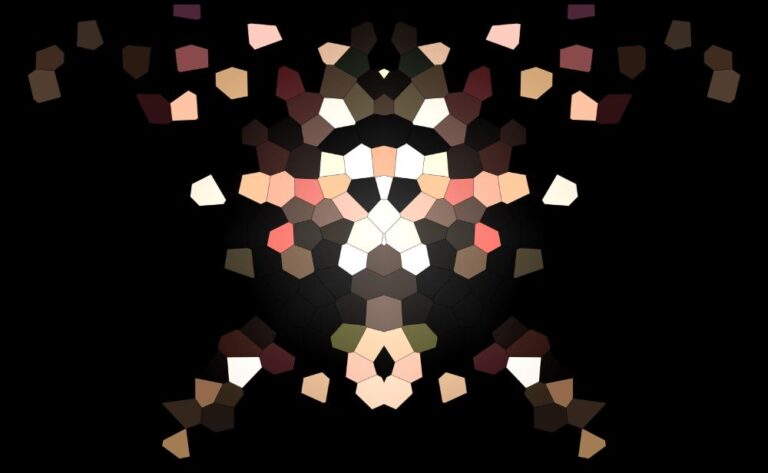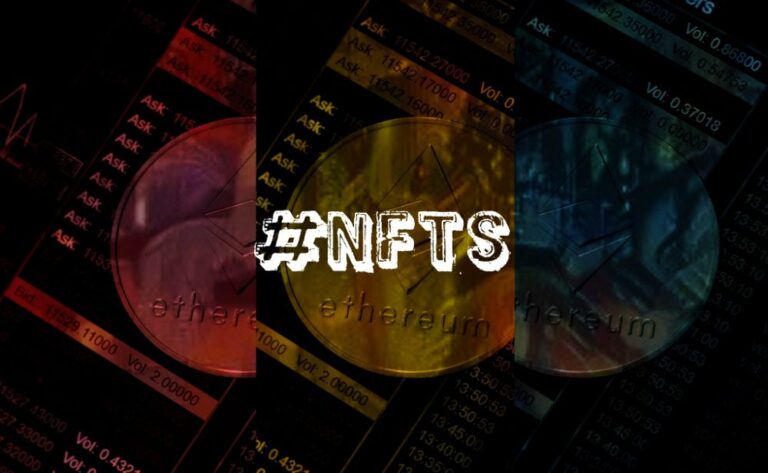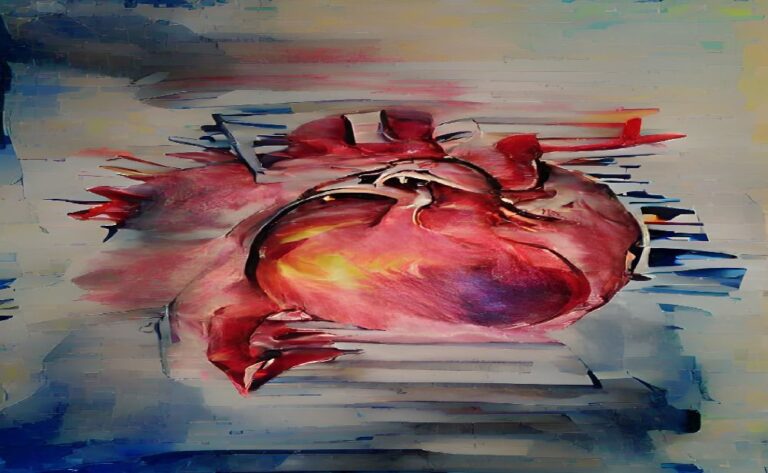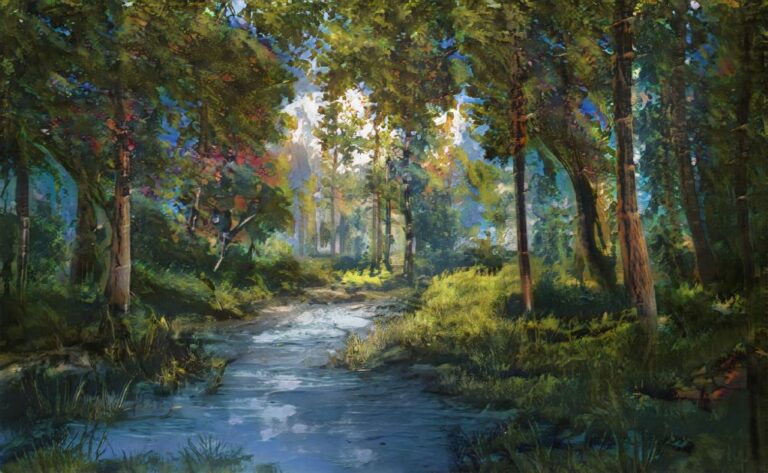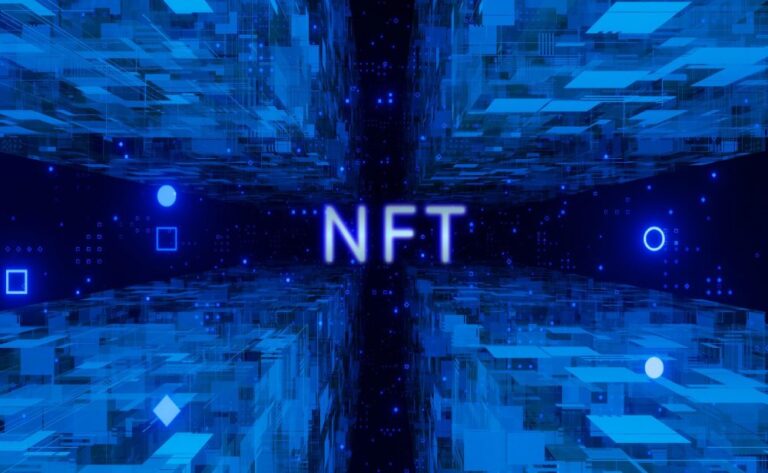
The best approach to illustrate a simple use case of NFTs to someone unfamiliar with blockchain and NFT technology is through virtual worlds. Currently, there are a variety of projects, but we have only ranked the top NFT virtual worlds. Several of the virtual worlds on our list are already operational and have agreements with major corporations such as Atari. Others have successfully sold all of their plots or acquired a large number of followers. Continue reading if you want to discover anything new about virtual worlds.
Top Reviews of NFT Virtual Worlds
Upland
Based on the real-world map, Upland is a virtual world game. You can buy and sell virtual properties that correspond to real-world addresses. The game’s economy is based on the EOS blockchain-based UPX token. You can launch a virtual business and earn UPX coins, which you can then exchange for U.S. dollars. Currently, customers may search for properties near San Francisco, New York, and a few other nearby regions, but the developers intend to expand in the future. The game is accessible via web browser, iOS, and Android apps.
Ember Sword
Ember Sword is a free-to-play massively multiplayer online role-playing game based on the Ethereum blockchain. It blends a battle system, an RPG, and the player’s imagination. You can enjoy the game, advance in many skills, and even make money through the artist workshop. Those skilled in 3D modeling, animations, and drawings will have the opportunity to participate in this course. Those with sufficient skill will have their art permanently incorporated into the game. Ember Sword will initially be released as a standalone client for PC and Mac, but it will also be playable on your web browser. After the game has been completely released, the developers will begin development on a mobile cross-play mode.
Somnium Space
Somnium Space is one of the first virtual reality (VR) metaverse games that successfully implement NFTs to authenticate in-game object ownership. There are numerous NFTs available for purchase in Somnium Space, but their parcels are the most intriguing. You can acquire land within the game and construct anything you choose on it. All of their parcels have been purchased, and you can now only get them through the OpenSea marketplace. You can play the desktop version of their game. Notably, you can use the vast majority of VR headsets, including Oculus, HTC VIVE, etc.
Treeverse
Treeverse is a second metaverse, however this one has a pixelated aesthetic. It has a distinctive appearance that will evoke a special feeling among all retro players. Treeverse was able to sell their whole inventory of approximately 10420 plots. The game is playable using a web browser, but Treeverse has also begun development on a mobile version. Since this is a massively multiplayer online role-playing game, it will contain enemies, weapons, consumables, and much more. Treeverse anticipates releasing the complete game in 2022.
Cryptovoxels
On the Ethereum blockchain, Cryptovoxels operates as a virtual environment. This virtual environment permits gamers to purchase land and construct stores and art galleries. It is essentially a metaverse where people can unwind together. This virtual environment can be used to showcase your NFT artwork or to exchange virtual real estate. You may play Cryptovoxels on your web browser or with their official Android app. Even without registering, you can play by visiting their website and clicking “Play Now.” The game’s items can be purchased with either ETH or WETH.
The Play Area
The Sandbox is the second largest virtual environment and is comparable to Decentraland. It utilizes the Ethereum blockchain but is powered by the SAND token. The Sandbox has partnered with numerous notable companies and musicians, including The Walking Dead, Atari, Binance, DeadMau5, and Snoop Dogg. You may purchase land, items, clothing, and more. The Sandbox NFTs are available for purchase on OpenSea, Rarible, and their own website. The Sandbox also enables players to stake Sand, which generates a passive income and exclusive in-game products.
Decentraland
Decentraland is a virtual universe that belongs to its users. Almost everything within the game is for sale, including virtual lands, clothing, pets, and flowers. Using API, you may also display your 2D NFTs if they are available on the OpenSea marketplace. The NFT can be placed within a picture frame. Decentraland is one of the most valuable NFT ventures of all time, and all of your in-game assets are NFTs. The MANA token powers the game.
How do we determine which NFT virtual worlds are the best?
As stated above, quite a number of NFT metaverses/virtual world projects have been released. As this is what we do on this website, we had to exclude the greatest ones. However, in order to make a proper listing, we were required to establish certain criteria.
• Impact – How active is this project on social networking sites and in the news? Did it help the NFT world expand, or did it only benefit the owners? We constantly favor initiatives that strengthen the NFT community as a whole. Obtaining a collaboration with a large corporation, as Decentraland and The Sandbox did, might also be advantageous.
• Art – Describe the virtual world. Can you navigate a 3D environment with other players? Perhaps it’s a 2D universe from our list, such as Treeverse. We do not favor 3D over 2D or vice versa; as long as the virtual environment has a distinct aesthetic, we evaluate it.
• Multiplayer – Virtual worlds can support both multiplayer and singleplayer modes. Some of the virtual worlds on our list, including Cryptovoxels, are both. Clearly, we like multiplayer virtual worlds since they unite players from all over the world.
• Markets – On which markets is the project available? In a perfect world, the project will be accessible on both their website and secondary market. Bonus points are awarded to NFT virtual world projects that offer both, however a large marketplace is preferred if only one is available.
• Platform – Which platform allows access to the virtual world? The greater the number of platforms, the better.
• Token – Which token is used in the virtual world? The majority of the time, those using their own cryptocurrency will save users money on transaction costs.
What is an NFT in the Virtual World?
You may have encountered the term “virtual world,” but what is it? Virtual worlds are digital settings where people can interact with one another, whereas NFTs provide a method for verifying ownership of in-game assets.
Virtual worlds consist primarily of 3D multiplayer games that allow for player interaction. NFTs are a method of purchasing in-game content, typically virtual land, buildings, or decorative things.
2D virtual worlds are also possible. However, this eliminates the virtual reality experience. As if virtual worlds weren’t already cool enough, we can use virtual reality headsets with some of them.
Virtual reality headsets give consumers the sensation of being immersed in the virtual environment. This is an excellent opportunity for businesses and individuals to promote their brands.
Imagine having a plot of land in one of these virtual worlds. Players could don their virtual reality headsets and see the walls you’ve adorned with company advertisements or merchandise. Where does NFT fit into this?
NFTs are non-fungible digital assets, as previously stated in our NFT University essay “What is NFT?” They serve as a means to verify the true owner of a digital object.
This digital item may be anything in the virtual world, including virtual land and cosmetic things like as coats and t-shirts. NFTs will essentially act as evidence that you possess something in-game.
In addition to brand promotion, there are other other opportunities. Atari has constructed a casino in the virtual world of Decentraland. In order to play in this casino, players must purchase tokens with real money.
Essentially, this means that you can earn money while playing. Choose a virtual world based on your desired activities.
What varieties of NFT virtual worlds exist?
There are numerous varieties of virtual worlds in the NFT and in general. We have chosen to concentrate on the three most prevalent ones. These forms of virtual worlds are:
• Non-immersive — This is the virtual world that is utilized the most. The majority of its users are aware that it is a virtual environment. The existence of non-immersive virtual worlds is made possible by computers, game consoles, input devices such as the keyboard and mouse, etc. This is essentially a form of virtual world in which the user is aware of his actual surroundings and is aware that he is in a virtual environment. This is best exemplified by video games, and one NFT example from our list is Upland.
• Semi-immersive — In this form of virtual reality, the user will remain cognizant of his or her physical surroundings. However, if he concentrates on the digital image, he would be gradually absorbed into another reality. These virtual worlds are made feasible by 3D visuals and the sensation of actual depth in games. Decentraland is an example of a virtual environment of this type. Essentially, when a virtual environment is semi-immersive, users will feel as if they are in another dimension, but will be aware that they are not in the “real” world.
• Truly immersive — If you want to experience a fully immersive virtual world, you will need the appropriate hardware. Such equipment includes virtual reality headsets and head-mounted displays (HMD). After putting on these glasses, you’ll feel as if you’ve entered another dimension. Fully immersive virtual worlds incorporate visual and aural aspects to provide the most realistic experience possible. You may see an example of such a virtual environment in our list, which includes Cryptovoxels. When entering virtual worlds using virtual headsets, users frequently combine reality and virtual reality.
How can you make a purchase in the NFT virtual world?
Frequently, virtual worlds provide a vast selection of products for purchase. It includes virtual land and wearable objects. So, how does one purchase an item in the virtual world?
The majority of online virtual worlds feature their own NFT markets. Within these markets, you can search for products based on their classification.
If the virtual world you have joined does not have a marketplace, you can likely purchase products from a secondary NFT marketplace such as OpenSea.
You might be wondering how this item enters the game. Blockchain technology enables virtual worlds to automatically recognize NFT items when they are purchased. Because each NFT transaction is public and NFTs are non-fungible, virtual worlds need merely check the blockchain to determine ownership.
Once they validate the new owner’s wallet address, it is simple to assign the item to a player.
The majority of the virtual worlds on our list are available on big markets such as OpenSea. The majority of the virtual world NFTs available on secondary markets are plots, while other items are offered on the game’s in-game marketplace.
You may be asking what types of tokens are available. This all depends on the virtual environment itself. The vast majority of virtual worlds, such as Decentraland and The Sandbox, have their own tokens.
High transaction fees are the reason why some projects do not utilize Ethereum. Virtual worlds have combated this by issuing their own tokens, allowing gamers to trade cheaply.
If you wish to make a purchase, you will require a digital wallet. Check out our ranking of the top NFT wallets if you don’t have one yet.
Profit from NFT virtual worlds
Yes, you did read that correctly. With NFT virtual worlds, you can make money. How does it work?
All of these virtual world projects have assets such as land or structures. There are a variety of ways to make money; nevertheless, flipping is the most prevalent method.
You can purchase the land cheaply and then keep it for some time. There is a likelihood that land prices will rise over time. If the project is serious and has effective marketing, of certainly.
You must avoid scam schemes that will never produce the promised game. Nevertheless, this is why we are here. Our rankings are reliable because our team of specialists does extensive study on each project before adding it to the list.
However, if you locate the right assignment at the right moment, you might earn a substantial amount of money. Decentraland, for instance, went from 24 dollars per property plot to a record-breaking $900,000 transaction.
Imagine being among the first individuals to invest in Decentraland. You may have purchased an item at a very low price and resold it two years later for ten times its original value.
However, just as with Bitcoin, missing the first one does not exclude participation in subsequent ones.
Currently, the majority of people in NFT virtual worlds also flip real properties. You only need to recognize a good bargain and have the necessary funds.
Developing game items
If the virtual world supports the creation of in-game items, this is still another opportunity to earn money. Some of the virtual worlds on our list feature so-called “workshops” where artists can produce items to sell to other users.
Even if you are a newbie artist, you can earn a great deal by selling your work as a non-for-profit (NFT). Why? Because the NFT sector is in its infancy and the competition is weak.
In addition, virtual worlds are even more recent than NFT collections, and there are opportunities for all types of artists. Obviously, the type of artwork you would produce would depend on the virtual environment itself.
In a 3D virtual world, it is possible to design wearable in-game goods. Depending on the world’s possibilities, these may be as simple as clothing items or the character’s basic appearance.
Rent virtual space
You do not need to rent it physically. You can instead establish art galleries and promote the art of other projects. Depending on the location of your virtual land, the amount of money you can earn in this manner varies.
If you are an early backer, you may be able to secure a prime position with a large number of visitors and increase your charges accordingly.
In addition to selling tickets, you might earn money from virtual environments in other ways. Even though F1 Delta Time is not an NFT Virtual World, it is an excellent approach to demonstrate how selling tickets may generate income.
One player purchased a Grand Prix de Monaco racing track in the game. Other players who wish to compete on this track must pay an admission fee. Each time someone pays, the track’s owner receives a percentage.
Likewise, virtual worlds can be utilized in a similar manner. You can charge an entry fee for tickets to your event. Be inventive, offer something distinctive, and let the “passive income” roll in.
Build your own virtual universe
This solution is probably unsuitable for the majority of you, but some of you may enjoy the concept. Strong competition exists in this market. There are excellent projects like Decentraland and The Sandbox, but there is still room for you.
Blockchain and non-fungible tokens are still in their infancy. Numerous NFT use cases still to be discovered. If you have enough imagination, you can exploit it to your advantage.
The expenditures associated with developing such a project are astronomical. Nonetheless, the advantages are enormous. NFTs are the future; therefore, you should include them into your own virtual environment.
The earning potential is ludicrous:
• Selling virtual land – As demonstrated by the preceding cases, it is possible to sell virtual plots. People adore these, particularly if there are “hot” plots in a desirable location. Once the initiative is up and running, the price of these virtual plots may surpass $100,000. Brands such as Atari have also purchased land in virtual worlds.
You can sell cosmetic, consumable, and utilitarian items within the game. The only limitation is your own imagination. Even cooler is the fact that you can charge a percentage royalty fee on each transaction between participants. In addition, you may construct a workshop where people can design their own things and charge a percentage for them.
Even though your virtual environment is free-to-play, you may still host private events. Users will be required to pay an entry/ticket charge to attend these activities. Snoop Dogg is building his mansion in The Sandbox, if you can believe it.
These are but a few of the most prevalent ways to earn money in virtual worlds. Possibilities are infinite. When designing your own virtual environment, you determine the rules.
Why do people acquire virtual property?
This question may perplex you, therefore allow us to provide an answer. People purchase virtual land either as an investment or because they are passionate about it.
As previously discussed, there are numerous ways to earn money in a virtual environment. Because of this, the majority of users view it as an investment where they may easily earn a lot of money.
This includes the previously mentioned land flipping as well as the sale of workshop items. Nonetheless, not everyone is in it for the money. Some individuals simply adore the concept of virtual worlds.
Virtual worlds offer an alternative to the actual world. Even if you cannot utilize a VR headset, you can still get a sense of immersion. We cannot wait to see how virtual worlds will appear in the future, as the technology behind these headsets is still in its infancy.
It is only a matter of time before developers are able to create an incredibly realistic virtual reality experience. Imagine using a VR headset to visit an island in the Bahamas during the winter.
Same applies to NFT virtual worlds. Even though it’s still early, the experience is already incredible. That you can transform into someone else is what draws others.
When purchasing land in the virtual world, you are free to do whatever you choose with it. If you have a mental sketch of your perfect home, you may make it a “reality.” Virtual land will become increasingly expensive with time.
However, there will always be fresh endeavors. If you are quick enough, you can get cheap virtual land. In addition, we regularly update the rankings of the finest NFT virtual world projects, so you can always find them on our website.
How may bespoke goods be added to the NFT virtual world?
Continue reading if you are an artist wondering how to become featured in a virtual world. We will describe the standard procedure you must take to import your own assets into a virtual world.
The procedure varies depending on the virtual world. In most circumstances, you will be responsible for producing the assets. Let us walk you through the procedure in some of the most well-known NFT virtual environments.
The Play Area
The first virtual environment on our list will be The Sandbox. They own a tool named “VoxEdit.” You can use this tool to create a variety of items for usage within the game.
Since all of The Sandbox’s designs are box-like, you will need to adjust your style accordingly. However, you may alter the size of the “boxes,” allowing you to construct something that appears circular.
Numerous tutorials have been released on The Sandbox’s website and YouTube channel. Observing these movies will teach you how to utilize the VoxEdit tool. We appreciate it because a well-documented project significantly boosts its worth.
Once all of the assets have been prepared, you can begin exporting them. All of your assets can be exported to The Sandbox marketplace, where they are turned into NFTs. You can even sell it on the market if you so choose.
Once the asset has been properly published, it will appear on your profile. Once published, The Sandbox metaverse assets are usable.
Decentraland
Decentraland, the largest virtual environment, allows people to develop their own assets. You can mix ones that currently exist or make your own.
The so-called “Scene” is one of the items you can design, and it can be published in-game.
To accomplish this, you must utilize their “Builder” tool. The builder tool is browser-based; no downloads are required. In the tool, you will be prompted to select the size of your “Scene.”
Scenes are small parcels that can be later imported onto territory owned by you or another player. You are able to select the size of your scene. There are various sizes, with “Mini” measuring 16 x 16 meters and limiting things per scene to 20. Up to 32 parcels is the maximum number allowed.
Once the scene size has been determined, you may begin designing. You can utilize the components on the right that are currently available. Aside from that, you may also import your own 3D assets, which must be in.glTF or.glb format.
Utilize the various tools, such as scaling, to create the desired scenario. Once complete, you can upload the scene to the “Scene pool” so that other people can utilize it in their own territory. If you own land, you can also add it to it.
In addition to scenes, you can construct wearable things. To publish such products in-game, however, you must obtain clearance from the Curation Committee.
If your apparel is authorized, it can be coined. Before you may publish your work, you must pay certain publication fees. This price was implemented to prevent designers from flooding the game with low-quality wearables.
Cryptovoxels
Similar to the two preceding examples, Cryptovoxels is a virtual world comprised of virtual land, wearables, and other elements. Users can produce, distribute, and trade their own assets.
All wearables are contained into collections. To have a collection, you must own a piece of property. There may be no more than one collection per owned lot.
If you do not own a piece of land, you have two options:
• Request a parcel owner to create a collection for you.
• Contribute to a public archive
MagicaVoxel is the application used to create an object for the Cryptovoxel virtual environment. Similar to The Sandbox, only box-like objects can be used.
Once an object has been created, its collection must be specified. If you possess a parcel, you can make your own. The collection will be reviewed by Cryptovoxels, and if it does not violate any restrictions, you will be added to the whitelist.
Possessing your own collection offers the opportunity to select the blockchain on which to sell. Public collections already have a predetermined blockchain, so you will need to conform to their preference.
The disadvantage of using public collections is that you will receive no royalties. All revenues on objects in public collections are distributed to the collection owners. Your creations (assets) will be published on the OpenSea marketplace for sale.
Here you can read more about their procedure.
Hopefully, you now have a better grasp of the procedure for incorporating bespoke elements into a virtual world. It is essential to recognize that each virtual world has its own set of rules. Always consult their documentation to determine how to add your own assets.
On which blockchain do NFT virtual worlds operate?
You may be asking which blockchain is the most popular for virtual worlds. Currently, the majority of NFT virtual worlds are on the Ethereum blockchain. However, the majority of virtual worlds use their own coins rather than Ethereum.
Transaction fees are the primary reason why virtual worlds such as Decentraland and The Sandbox have generated their own coins. In 2015, Ethereum was the first blockchain to accept NFTs.
Since then, millions of distinct NFT initiatives have joined the ETH blockchain. This has led to increased gas prices (transaction fees).
The CryptoKitties NFT project has had a significant impact on gas prices, let alone other ventures. To combat this, Ethereum blockchain projects have created their own tokens. Examples are The Sandbox’s SAND token and Decentraland’s MANA token.
Custom tokens aid in reducing gas costs, however fees are still higher compared to other blockchains. For instance, the average transaction fee on the Solana network is 0.000025 dollars per transaction, whereas the average transaction fee for ETH is approximately 25 dollars.
Other blockchains, such as Polygon and EOS, are utilized by NFT virtual worlds. As time passes, we anticipate an increase in the number of projects utilizing other blockchains, until Ethereum can resolve the scalability concerns that lead to high transaction costs.
Can virtual worlds be accessed for free?
Yes, the majority of virtual worlds are free to play. However, it is likely that in-game products will cost you money. The following are examples of free games:
• Decentraland
• The Playground (Requires Pre-registration)
• Cryptovoxels
• Somnium Space VR
• Ember Sword
The majority of these virtual worlds rely on the sale of in-game items, but they are typically free to play. You may be limited in what you can do until you make a purchase, but at least you can preview the game beforehand.
Virtual worlds are accessible on the majority of main platforms, including PC, Mac, mobile devices, etc. The nicest part is that you can access the majority of virtual worlds through a web browser without having to download anything.
Cryptovoxels even provides a technique to construct for free. If you do not wish to pay for a package, you can establish a free area. However, you cannot socialize with your buddies in these areas.
However, you can always publish the URL to your place and invite others to join to view your creations. Owners of parcels can also add a teleport link to your place.
